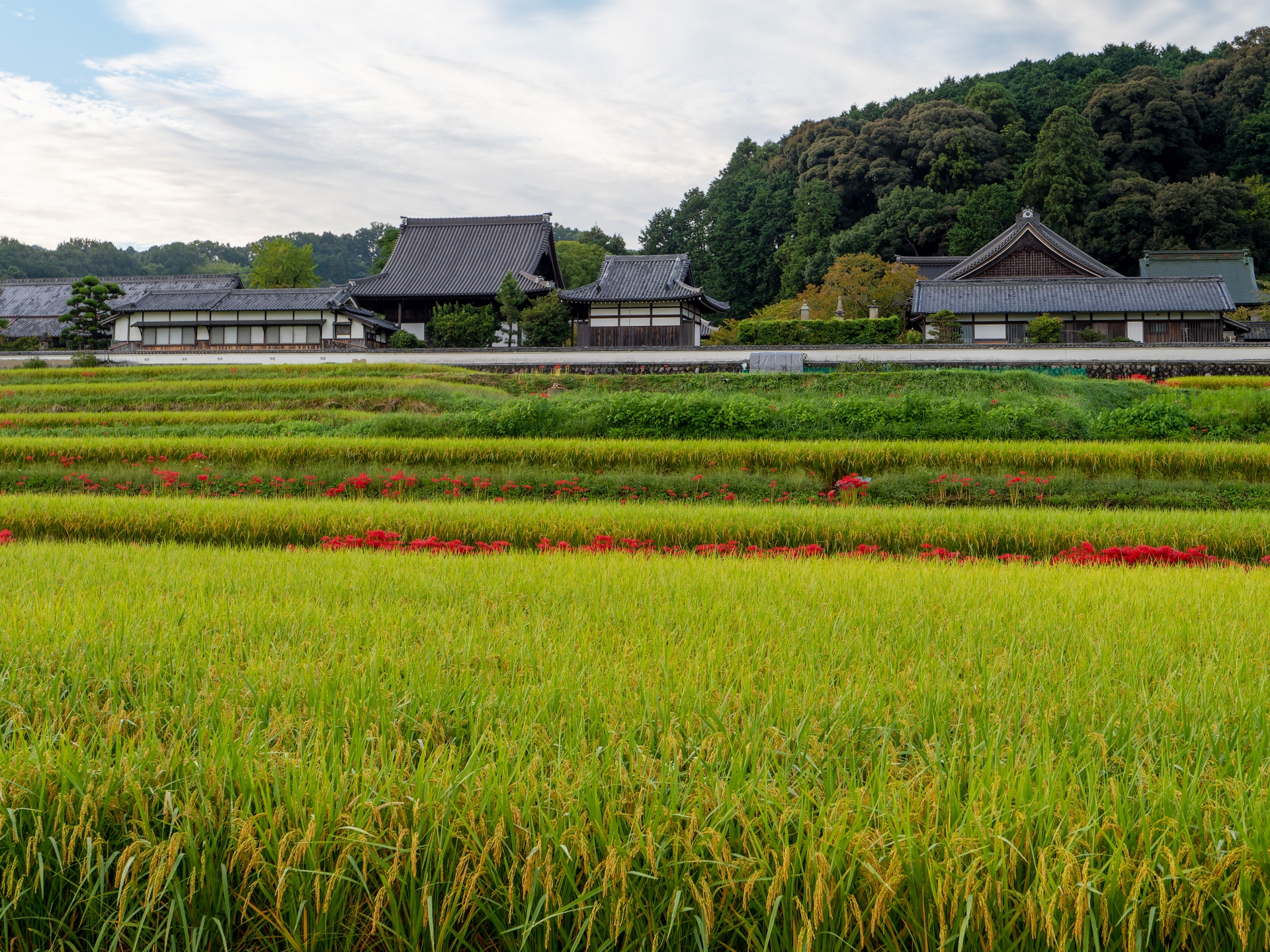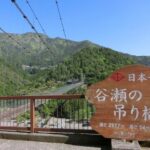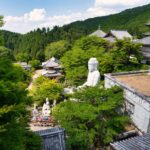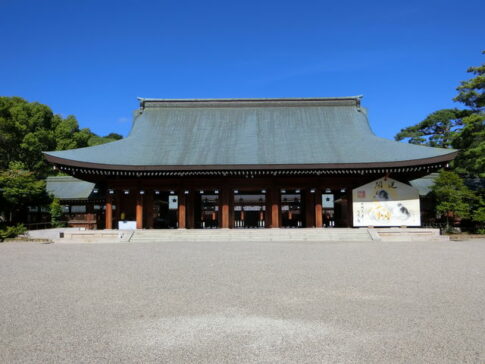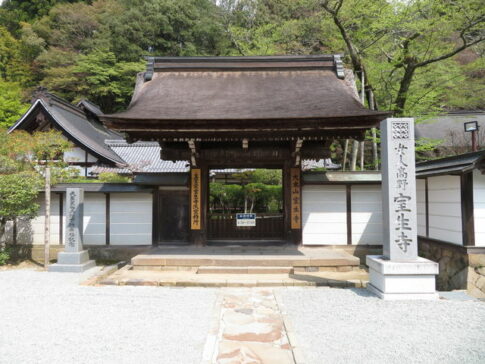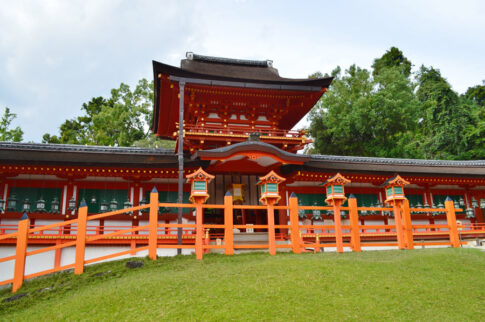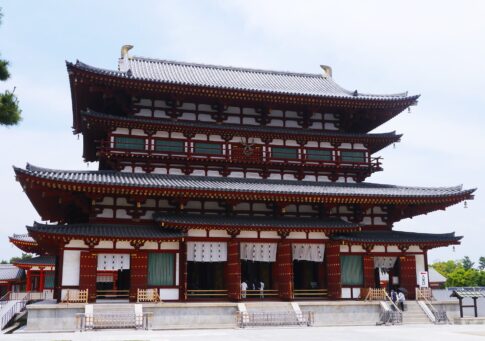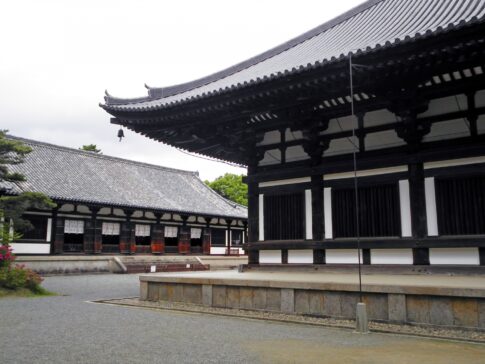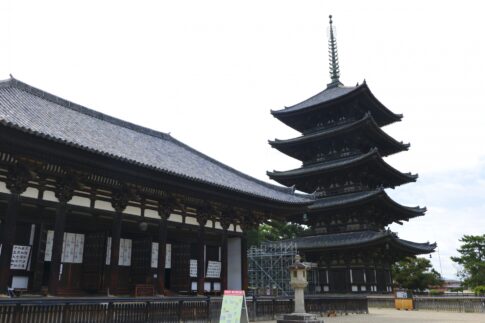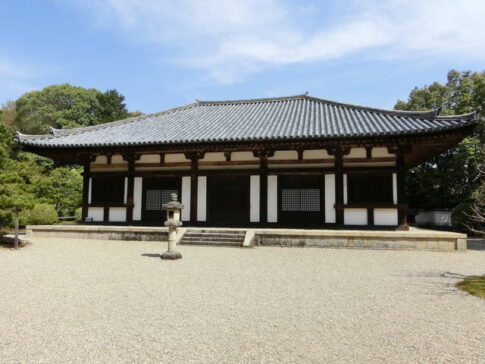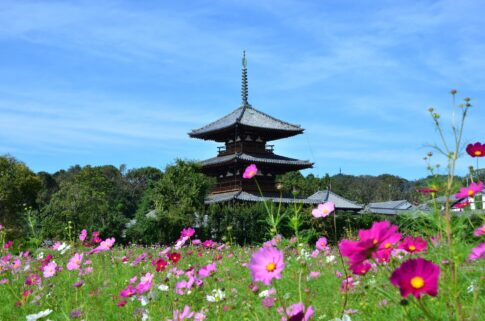Tachibana Temple is not so famous as well as Todaiji Temple, Horyuji Temple, however, it has a long history and mysterious episodes.
If you are interested in mysteries about history, this is an attractive place to visit!
What you need to know before visiting Tachibana Temple
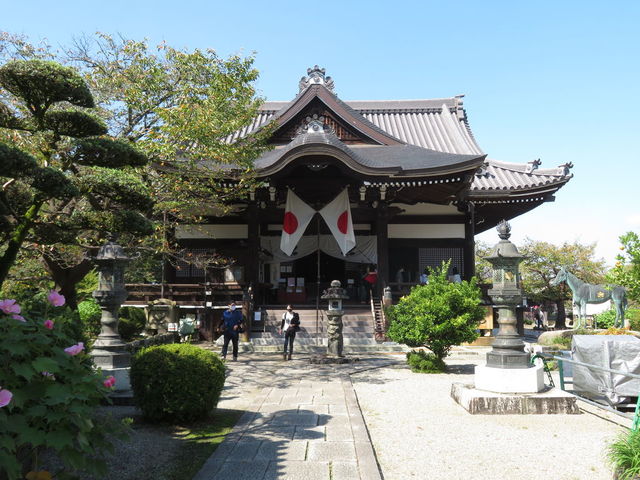
1. Basic Information
Tachibana Temple is one of the oldest temples in Japan, known as the birthplace of Prince Shotoku.
The temple stands in the middle of rice paddies, symbolizing the peaceful Asuka Village, and attracts many visitors during the autumn harvest season to take pictures.
The Nimen-ishi (two-faced stone) in the temple grounds is also a must-see.
This is the 10th temple of the New Saigoku Sanjusanjo (33 temples in the western part of Japan).
2. History of Tachibana Temple
The date of Tachibana Temple’s founding is unknown. It is located near the place where Prince Shotoku is said to have been born.
It is said that Prince Shotoku converted the annex of his father, Emperor Yomei, into a temple, but the details are unknown.
It is said to be one of the seven temples built by Prince Shotoku, and in the 8th century, it was a large temple with 66 halls, arranged in the Shitennoji or Yamada-dera style.
In the Muromachi period (1336-1573), the entire temple was burnt down by the Tabu peak mob, and the temple declined.
Today, only a few buildings remain, including the main hall (Taishiden), which was rebuilt in the Edo period.
Inside the hall, there is a statue of Shotoku Taishi (Important Cultural Property), which was created in the Muromachi period (1333-1573).
3. Story of Tajimamori and Tachibana
The name of the temple, Tachibana Temple, derives from the fact that it was planted with the fruit of a tachibana tree brought back by Tajimamori, who went to retrieve the fruit of immortality at the order of Emperor Taruhito.
According to the Nihon Shoki (Chronicles of Japan), during the reign of the 11th Emperor Taruhito, Tajimamori went to the land of everlasting life by order of the Emperor, and after 10 long years of hard work, he finally found and brought back the secret medicine, but the Emperor had already passed away.
The Emperor had already passed away.
The fruit he brought back was called “tokijikunokagunonomi,” and when it was sown at Tachibana Temple, it sprouted into a tachibana (the original species of tangerine), which is said to have given rise to the name “tachibana” to this area.
He also brought back brown sugar, which he used as a medicine along with tangerine, and later came to be worshipped as the ancestral god of tangerine, medicine, and confectionery.
This is the reason why the name “Tachibanaya” is often used by confectioners.
4. Highlights of Tachibana Temple
- Nimenseki(Two-faced Stone)
This Nimenseki is the most popular spot at Tachibana Temple.
The Nimenseki is a granite stone 1 m high, 85 cm long, and 52 cm wide, with two faces carved on the front and back sides, one good and one evil.
The two-faced stone is said to have been carved during the Asuka period (710-794).
The face on the right side is called the “good face” and the face on the left side is called the “bad face,” representing the way we hold our hearts.
There are many such stone structures in the Asuka Village area, many of which are shrouded in mystery.
- Main Hall
This building was rebuilt in 1864, and a 33-year-old seated statue of Prince Shotoku is enshrined as the principal image.
Other statues enshrined here include those of Fudo Myoo, Shotoku Taishi, and Tadomichi Mamoru.
- Kannon-do Hall
The main hall was rebuilt in 1777.
In 1865, the main hall was moved to its present location and a statue of the Nyoirin Kannon was enshrined as the Kannon Hall.
Inside the hall, old tiles and other old materials are on display, and visitors can try their hand at sutra copying.
- Lotus Mound
The lotus flowers that fell on the occasion of the Buddhist sermon on the Shoman Sutra were buried in this mound, which is also called “Unewari-zuka” (mound with 100 square meters).
- Sanko-ishi, Aji-ike Pond
This pond is said to have been created by Prince Shotoku.
- The remains of a five-story pagoda
The pagoda was destroyed by fire due to a lightning strike.
The foundation stone of the central pillar of the pagoda is a faint reminder of the pagoda’s past.
The hole in the central foundation is a circular pillar with supporting pillars on three sides.
It is said to have been about 40 meters high when it was built in the Asuka Period, taller than the five-story pagoda of Horyuji Temple.
- Special Open House in Spring and Autumn
Every spring and fall, the Seikura-den (Treasure House) is open to the public for a special viewing of the temple’s treasures.
Wooden, 144.6cm high, Heian period (Important Cultural Property, dated 794-1192)
The statue is a Buddha statue with a thick body and sturdy lower body, which is a characteristic of the Heian period.
Even the flowers under the feet are carved from a single piece of wood.
According to legend, this standing statue of Nira Shonin is said to have been the teacher of Prince Shotoku, but it is also believed to have been built as a standing statue of Jizo Bosatsu (Jizo Bodhisattva).
It is said to be in good condition, but the ends from the wrists were carved from a different material.
- Famous for higanbana (cluster amaryllis)
Tachibana Temple is known as a famous place for higanbana (cluster amaryllis) and is visited by many people every year when the flowers are in bloom.
The entire village of Asuka is famous for higanbana, so it is possible to enjoy higanbana in various places.
Flowering season: Mid-September to late September
5. Visit Information
Hours:09:00 – 17:00 (Admission until 16:30)
Entrance fee:
*The entrance fee has been revised as follows effective April 1, 2022.
・Adults and college students: 400 yen
・High school and junior high school students: 300 yen *No change
・Elementary school students: 200 yen
*Please check the website for any changes.
Summary
Tachibana Temple is full of mysteries.
If you like to know what is yet to be figured out, please visit here!
